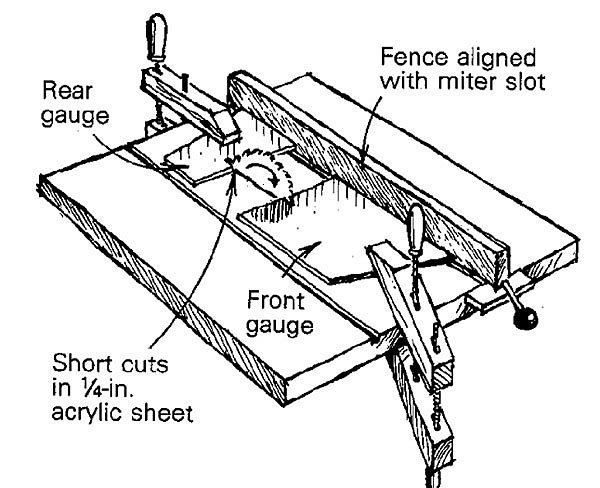
It seemed that no matter how carefully I aligned my sawblade with its fence, they wouldn’t end up quite parallel. This can result in cuts that have burned edges, and even worse, the binding action of the blade against the fence can cause the workpiece to kick back. The drawing shows an easy technique I developed to align the blade with the fence.
First I lined up the edge of my fence with the miter slot to the right of my sawblade and clamped it in place. Next, with the blade in its highest position, I made short cuts in two pieces of 1/4-in. acrylic sheet for gauges (hardboard or birch plywood will also work). With the saw unplugged and the fence in the same position, I loosened the bolts that allow the saw’s trunnions to be moved relative to the table. A contractor’s saw typically has four bolts — two in front and two in back. By leaving one of the forward bolts pretty tight, I can use it as a pivot point. The bolt that I leave tight will depend on whether I need to move the blade clockwise or counterclockwise.
I clamped the forward gauge to the table so that the blade was in its slot, and then lightly tapped the trunnion assembly until the blade fit correctly in the slot of the rear gauge. When the fit is right, the blade turns freely in the slots, and then I tighten the adjustment bolts. The blade should now be parallel with the miter slot in the saw’s table.
Frederic E. Bishop, Farrell, PA





























